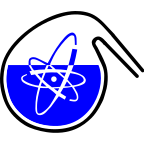Speaker
Description
Thorium and Uranium are representative elements of actinide metal that have naturally radioactivity and widely distributed in the environment [1,2]. Thorium is used as a material for producing nuclear fuel, and ThO2 is often employed as a catalyst. Also, thorium is applied in high-quality lenses and high-tem-perature ceramics, and the alloys of thorium are frequently used in air craft engines. Uranium is one of the main fuels in nuclear energy generation, and it also has been used in nuclear weapons. With the growing human demand for nuclear energy, the worldwide uranium consumption is continuous increasing.
Considering the widespread use of these two metals and these toxic properties, the development and improvement in analysis methods for the determination of thorium and uranium are vital. Therefore, many techniques have been used for the determination of thorium and uranium. Among these analysis methods, chemosensors detection is a simple, rapid, highly selective, and low-cost method for metal ion determination.
Considering the unusual photophysical property of aggregation-induced emission (AIE) compounds, AIE compounds may as chemosensors and provide good approach for actinide metal ions recognition. Herein, a series of compounds with tetraphenylethene structure are prepared as chemosensors for recognition of thorium and uranium. These sensors have excellent selectivity and anti-interference ability, which can efficient identification and analysis of the target metal ions under complicated conditions. Meanwhile, due to the aggregation-induced emission property, these sensors can realize the target metal detection without expensive instrument. These sensors have potential applications in environmental systems for thorium and uranyl ions detection.

